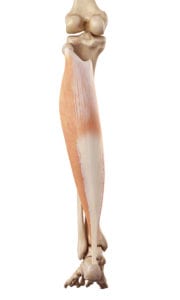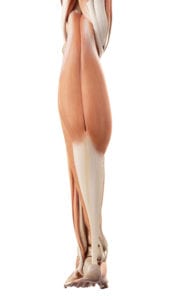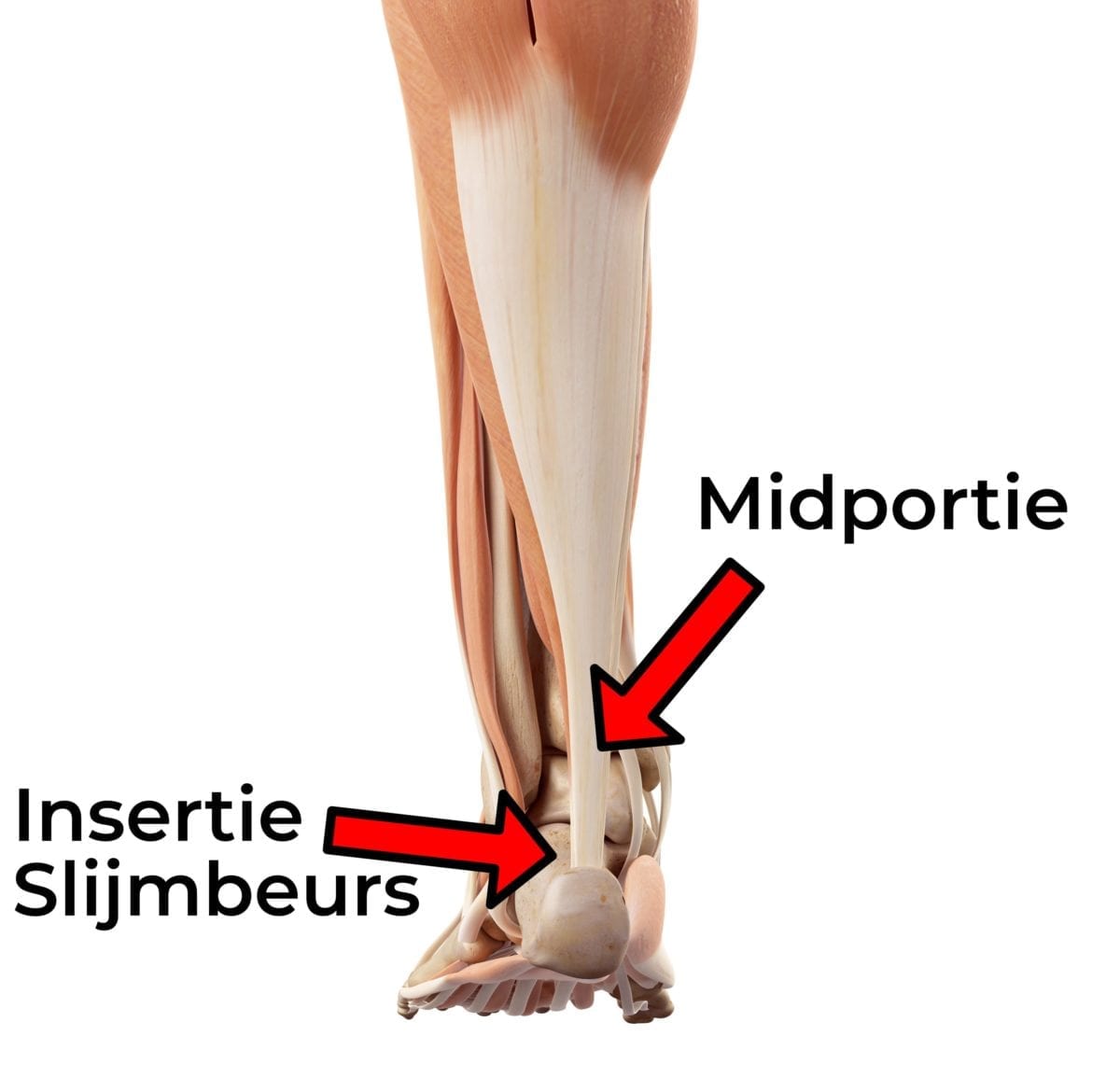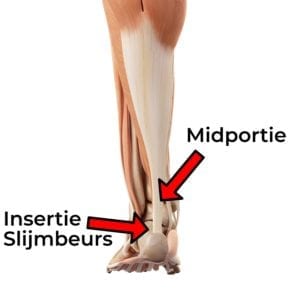Achillespees klachten
Achillespees klachten zijn veel voorkomende klachten bij hardlopers. De klachten zijn vaak langdurig en erg lastig te behandelen. Vaak zie je dat hardlopers zich geen raad weten. In dit artikel krijg je uitleg over hoe de klachten ontstaan, welke verschillende vormen er zijn en wat je wel en wat je vooral niet moet doen.
Wat is de achillespees?


De achillespees is de pees die de diepe en oppervlakkige kuitspieren verbindt met het hielbot. De pees is de sterkste pees in het lichaam en krijgt tijdens het hardlopen enorme krachten te verduren. Bij te veel herhaling van te grote krachten op de pees kan er een overbelasting ontstaan. Op afbeelding 1 zie je de M. Soleus spier, dit is de diepe kuitspier en op afbeelding 2 zie je de M. Gastrocnemius de oppervlakkige kuitspier. De M. Gastrocnemius bestaat uit twee spierkoppen (binnenste en buitenste) die samen overlopen in de achillespees. Deze vormen samen ongeveer 50% van de achillespees. De Soleus is verantwoordelijk voor de andere 50% van de achillespees.
Hoe herken je een achillespeesblessure?
Over het algemeen zijn blessures van de achillespees geleidelijk ontstaan. De pijn is in eerste instantie alleen aan het begin van activiteit en gaat weg na de warming up. Later blijft de pijn langer aanhouden en is deze ook in rust aanwezig. Vaak zijn er in de ochtend stijfheidsklachten in de achillespees.
De klachten kunnen zich op meerdere plekken uiten namelijk: ongeveer 2 tot 7cm boven de aanhechting op het hielbot en op of rond het hielbot zelf. Soms is er zwelling waar te nemen in de pees of bij de aanhechting op de hiel.
Oorzaken van achillespees klachten
Achillespeesblessures zijn over het algemeen veroorzaakt door overbelasting. Dit komt vaak door meerdere factoren die samenwerken.
- Een plotselinge toename in training omvang of intensiteit bijvoorbeeld door meer heuvels in de training;
- Een instabiliteit in het been tijdens het hardlopen
- Zwakke spieren in de heupen, bovenbenen, kuiten of voeten;
- Beperkte bewegelijkheid in één of beide enkels;
- Voetstand afwijkingen waardoor de pees asymmetrisch belast wordt;
- Slechte looptechniek;
- Slechte of oude hardloopschoenen.
Hoe kan je achillespees klachten voorkomen?
- Zorg ervoor dat je het hardlopen geleidelijk opbouwt;
- Als je aan het trainen bent is een goede warming-up onmisbaar, zeker in de wintermaanden is het belangrijk om hier extra aandacht aan te besteden. Probeer eens een dynamische warming-up;
- Laat een specialist je schoenen controleren bijvoorbeeld bij Run2Day;
- Zorg voor voldoende mobiliteit in de enkels;
- Train voor voldoende kracht in de kuitspieren;
- Zorg voor voldoende stabiliteit in de heup;
- Een goede hardlooptechniek, zoals in dit artikel beschreven.
Leer meer over de verschillende soorten achillespees klachten:
1. Insertie
2. Midportie
3. Slijmbeurs

